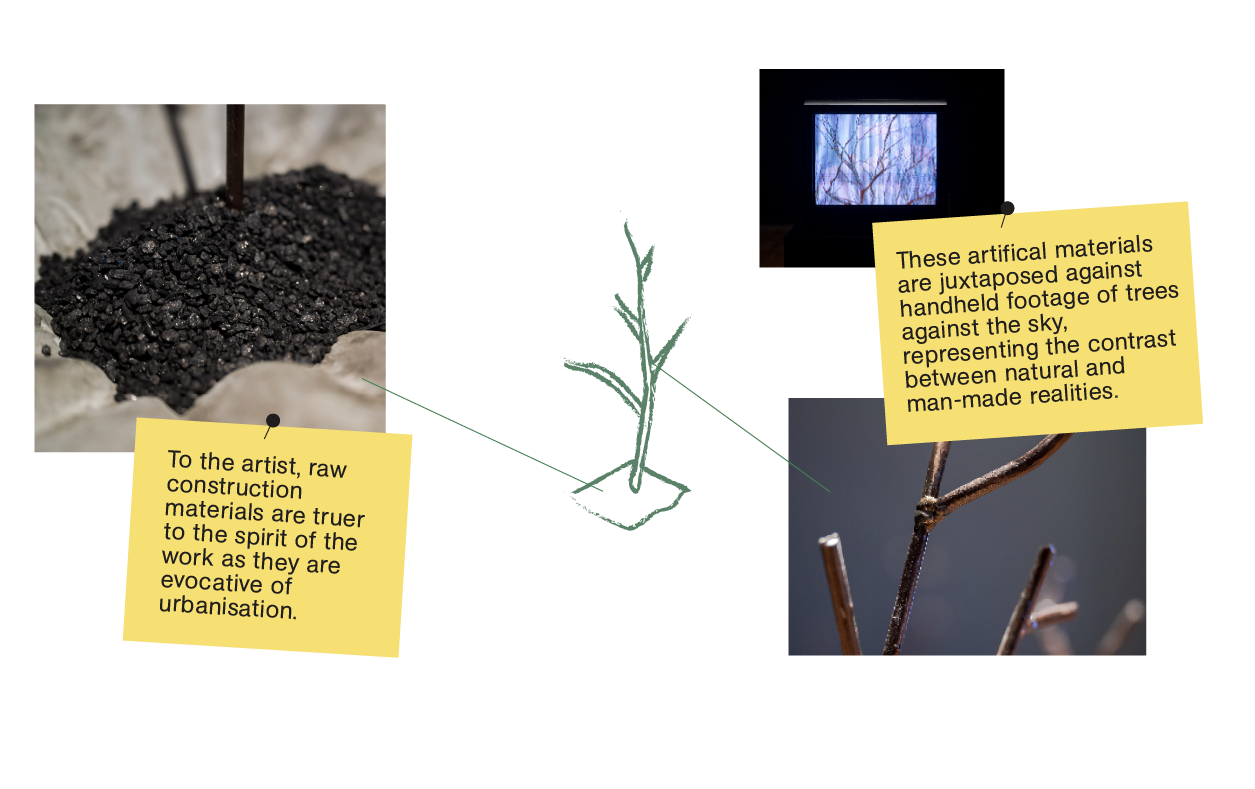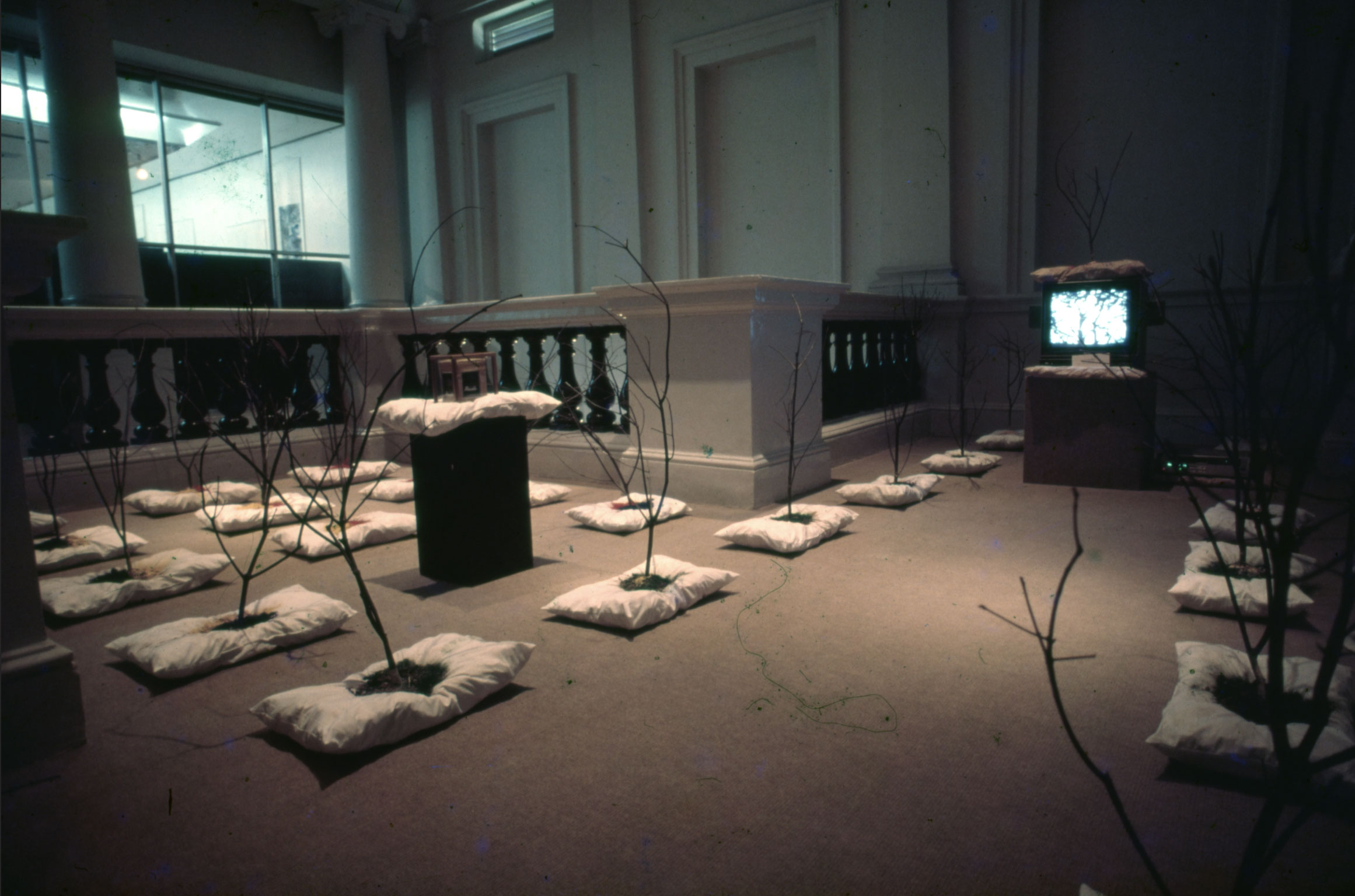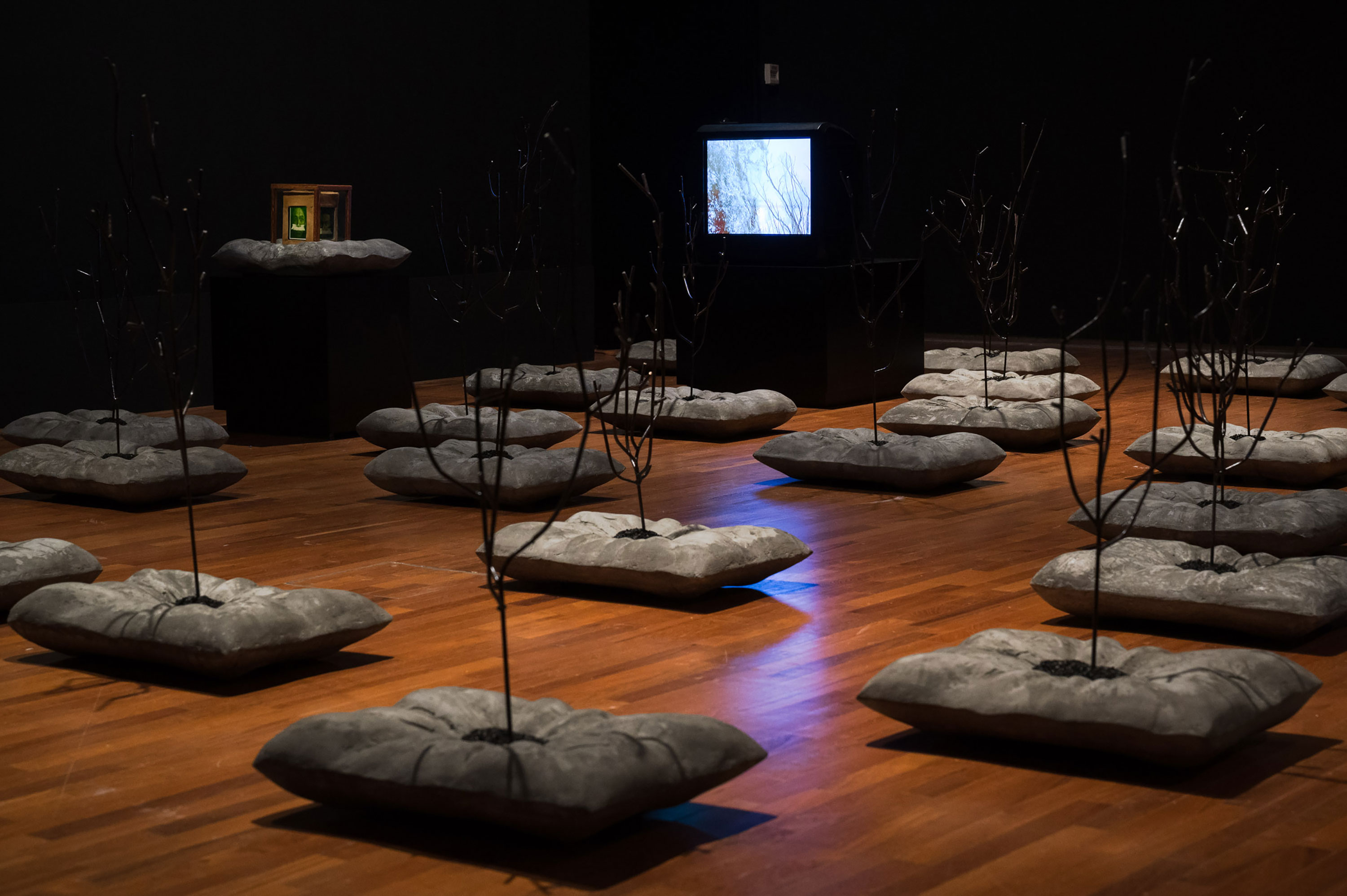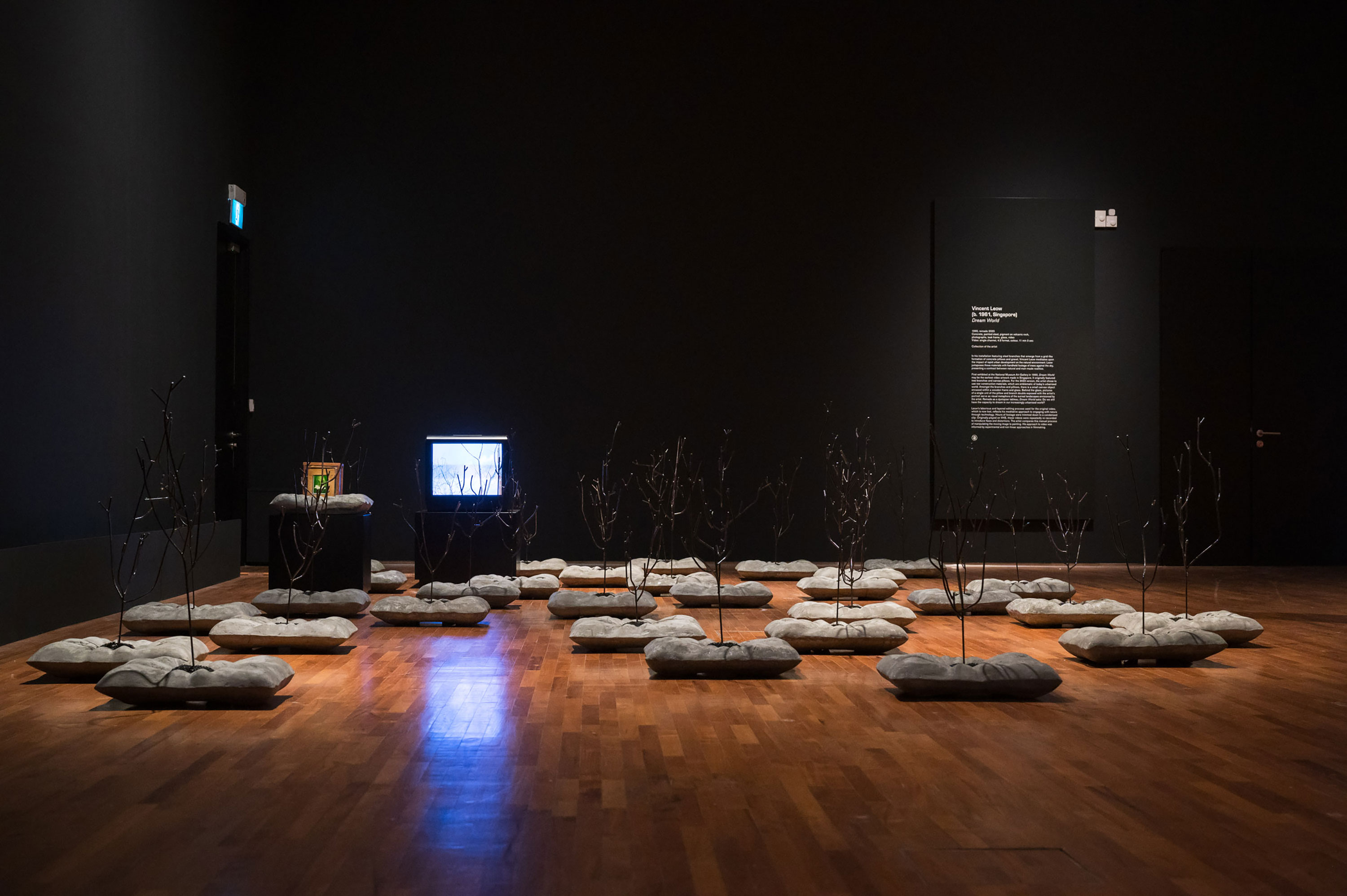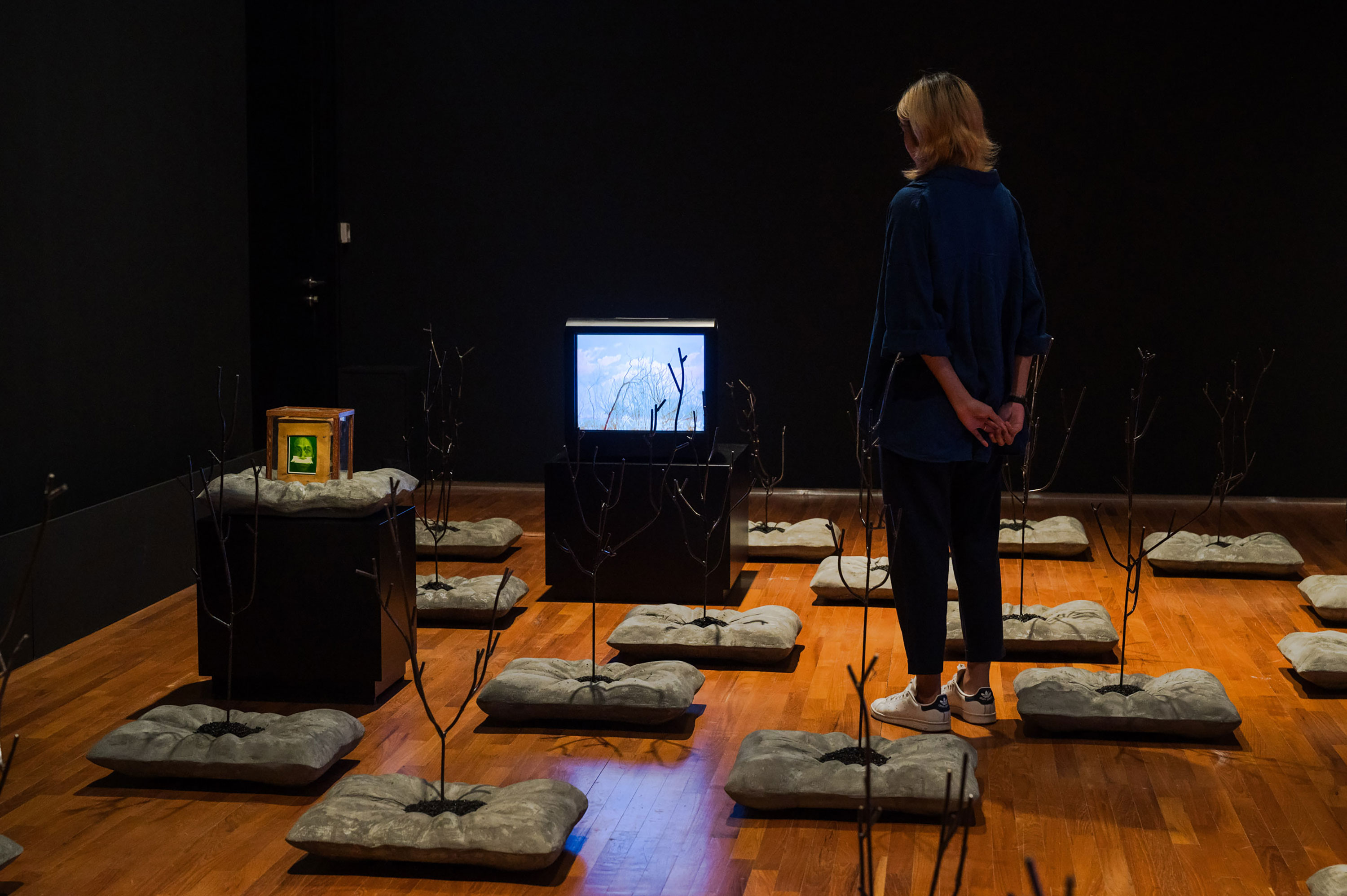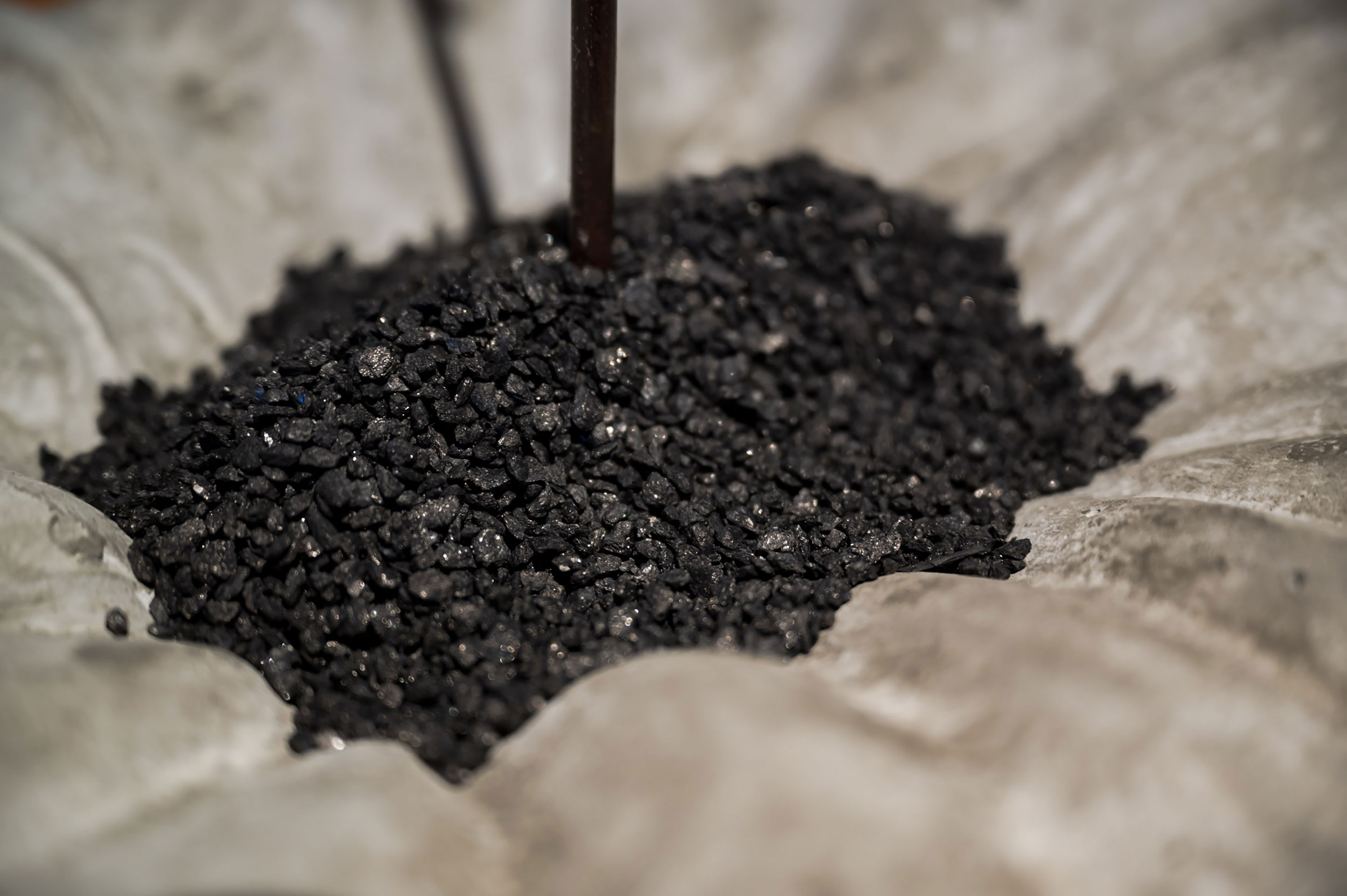
Featuring steel branches that emerge from a grid-like formation of concrete pillows and gravel, Vincent Leow meditates upon the impact of rapid urban development on the natural environment.
About the Artwork
Dream World
1990, remade 2023
Concrete, painted steel, pigment on volcanic rock, photographs, teak frame, glass, video
Video: single channel, 4:3 aspect ratio, colour, 11 min 3 sec
Collection of the artist
Leow juxtaposes these materials with handheld footage of trees
against the sky, contrasting natural and man-made realities.
First exhibited at the National Museum Art Gallery in 1990,
Dream World may be the earliest video artwork made in
Singapore. Leow created the work in response to an invitation to
participate in the exhibition Urban Artists: 25 Years of Singapore
Art.
Leow's experimental foray into video can be seen as part of a
wider exploration of mediums beyond painting and sculpture,
catalysed in part by his involvement with The Artists Village, an
artist collective founded in Singapore in 1988.
Leow’s laborious and layered editing process for the original video, now lost, reflects his meditative approach to engaging with nature through technology. Hours of footage were trimmed down to a condensed clip.
Originally recorded onto a VHS tape, the video was repeatedly rerecorded from VHS tape onto cathode-ray-tube television and
back to VHS tape, to introduce flaws and distortions. Leow has
discussed his approach to video as inspired by the experimental,
non-linear modes of filmmaking advanced by David Lynch and
Federico Fellini. Drawing striking connections between new
technologies and “conventional” mediums, the artist compares
this manual process of manipulating the video to painting,
relating both to notions of a screen through which information
and meaning are conveyed.
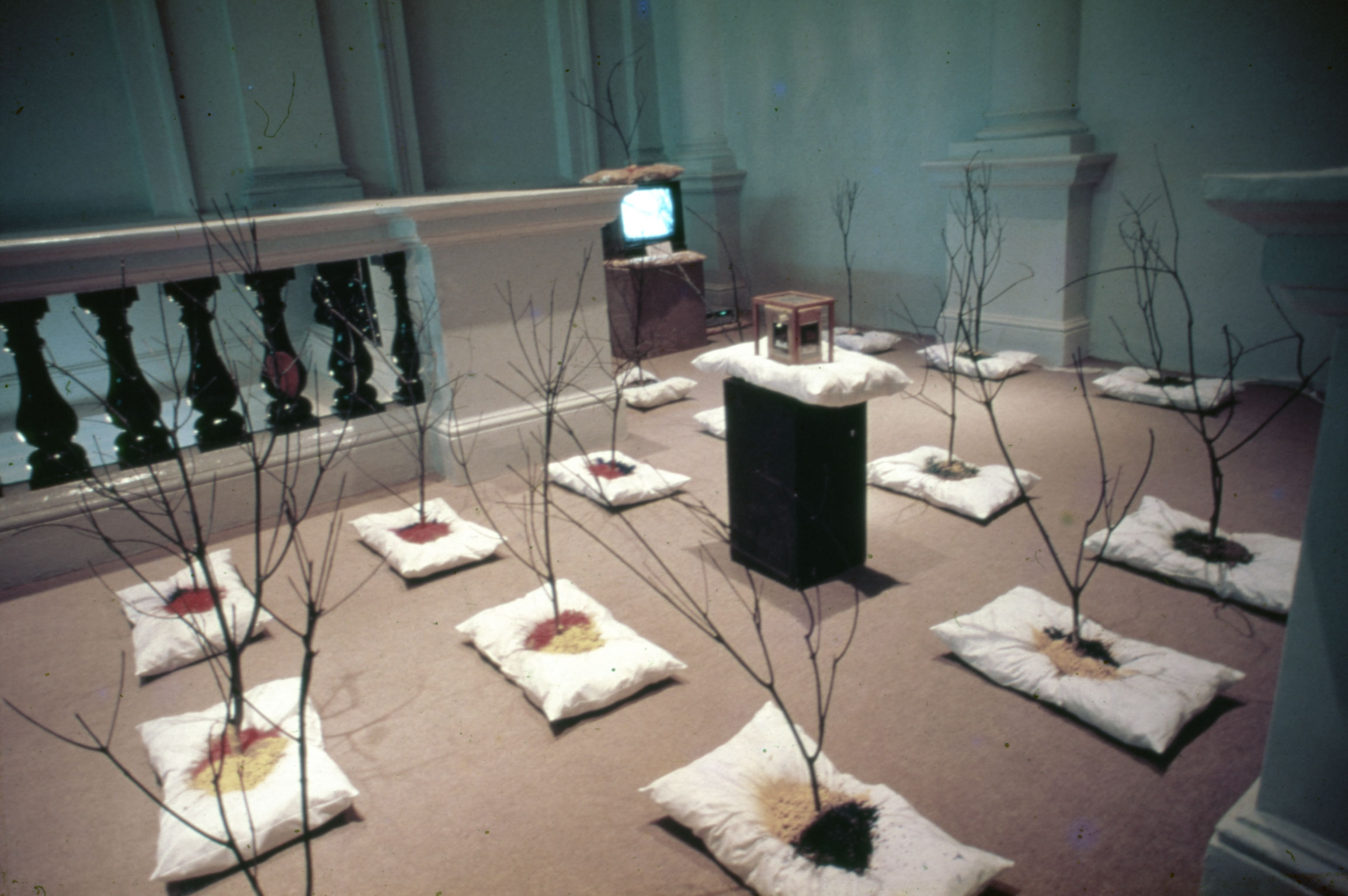
Vincent Leow. Dream World. 1990. Installation view, Urban Art, National Museum Art Gallery, 1990. Image courtesy of the artist Ⓒ Vincent Leow
Remade as a dystopian tableau, Dream World asks: Do we still have the capacity to dream in our increasingly urbanised world?
In 1990, each “unit” of the installation consisted of a tree branch, a canvas pillow stuffed with newspaper, and a small pile of earth, turmeric and chilli powder. For the 2023 version, however, the artist opted to use raw construction materials instead. The tree branches were produced in painted steel, the pillow made from cast concrete, and the powdered elements made of volcanic rock coated with black pigment, which bore a close resemblance to asphalt. Remade as a dystopian tableau, Dream World asks: Do we still have the capacity to dream in our increasingly urbanised world?
Amongst the branches and pillows, there is a small canvas object encased within a wooden frame and glass, the only extant element of the original installation. On each of the five visible faces of the canvas object, a photograph featuring a single unit of the pillow and branch double-exposed with the artist’s portrait, serves as a visual metaphor for the surreal landscapes envisioned by the artist. Placed within the gridded field in close proximity to the single-channel video, this photo-object acts as a cipher for the artist’s body, whose mind-image is manifest through the barren landscape.
About the Artist
Vincent Leow (b. 1961, Singapore) is an artist and art educator whose practice spans a wide range of genres, including sculpture, installation, performance art and painting. Leow was awarded the Cultural Medallion in 2022 as well as the Culture Award (2002) by the Japanese Chamber of Commerce and Industry for his contribution to the arts. He represented Singapore in the 52nd Venice Biennale of Contemporary Art (2007); the 9th Indian Triennial of Contemporary Art, New Dehli, India (1997); and the 1st Asia Pacific Triennial of Contemporary Art, Brisbane, Australia (1993). He has a Diploma in Fine Art (Sculpture) from the LASALLE College of Arts; a Master of Fine Arts from the Maryland Institute College of Art (MICA); and Doctorate of Fine Art from the Royal Melbourne Institute of Technology (RMIT).
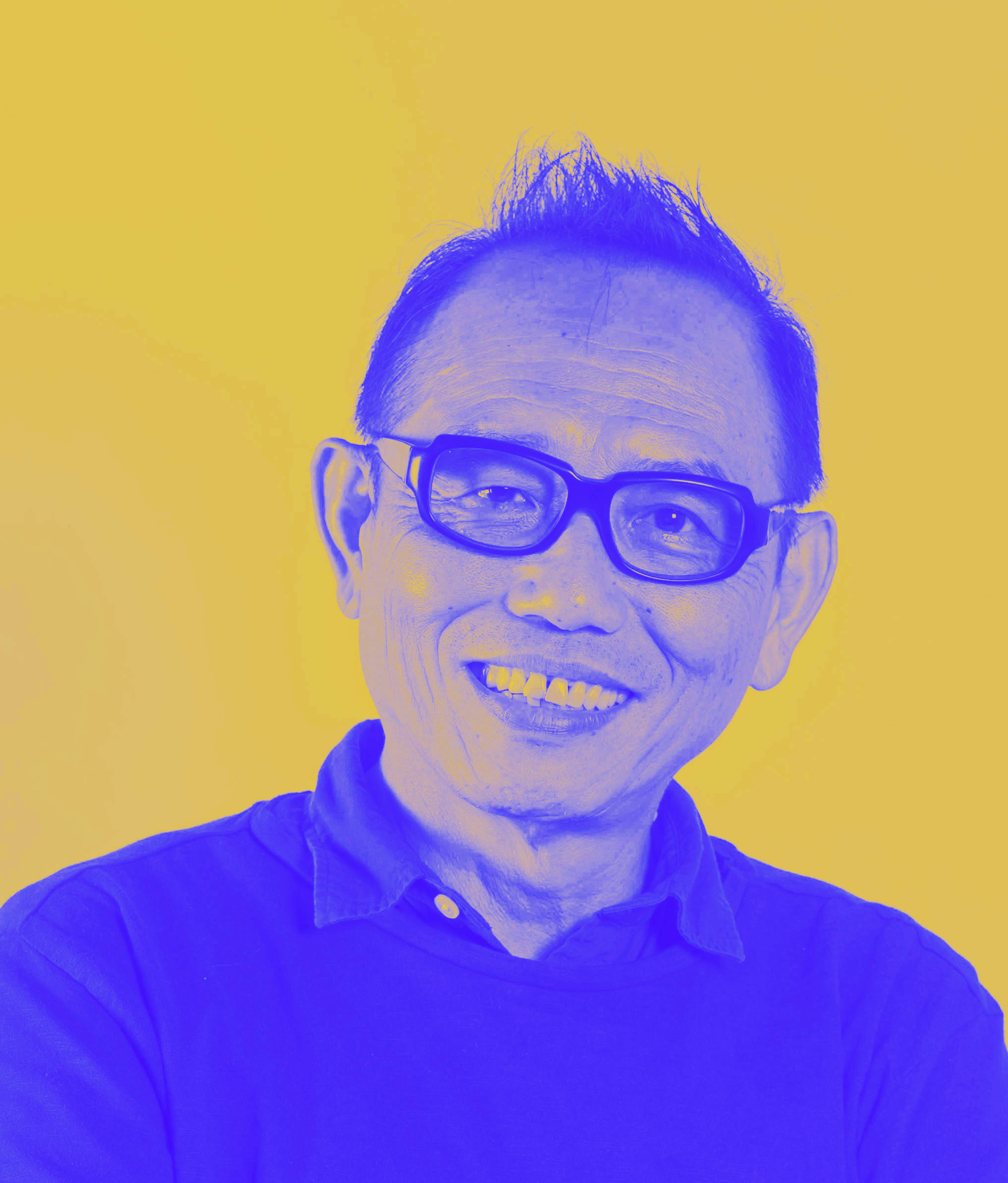
Image courtesy of Vincent Leow
Installation View
Discover More Details
Leow’s artwork comprises many man-made materials, such as metal and concrete, and materials that look artificial, such as volcanic rock coated with black pigment to look like asphalt.
